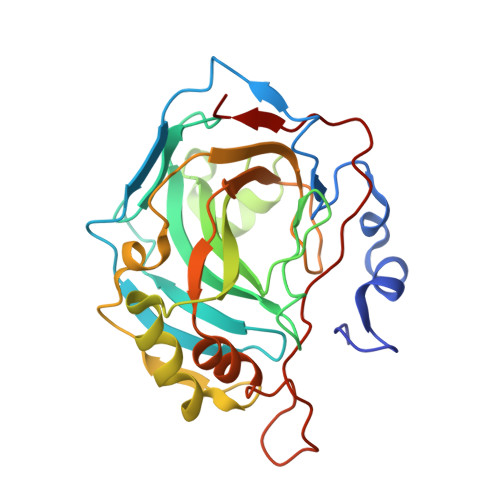Native State Mass Spectrometry, Surface Plasmon Resonance and X-Ray Crystallography Correlate Strongly as a Fragment Screening Combination.
Woods, L., Dolezal, O., Ren, B., Ryan, J.H., Peat, T.S., Poulsen, S.(2016) J Med Chem 59: 2192
- PubMed: 26882437
- DOI: https://doi.org/10.1021/acs.jmedchem.5b01940
- Primary Citation of Related Structures:
5EH5, 5EH7, 5EH8, 5EHV, 5EHW, 5FLO, 5FLP, 5FLQ, 5FLR, 5FLS, 5FLT, 5FNG, 5FNH, 5FNI, 5FNJ, 5FNK, 5FNL, 5FNM - PubMed Abstract:
Fragment-based drug discovery (FBDD) is contingent on the development of analytical methods to identify weak protein-fragment noncovalent interactions. Herein we have combined an underutilized fragment screening method, native state mass spectrometry, together with two proven and popular fragment screening methods, surface plasmon resonance and X-ray crystallography, in a fragment screening campaign against human carbonic anhydrase II (CA II). In an initial fragment screen against a 720-member fragment library (the "CSIRO Fragment Library") seven CA II binding fragments, including a selection of nonclassical CA II binding chemotypes, were identified. A further 70 compounds that comprised the initial hit chemotypes were subsequently sourced from the full CSIRO compound collection and screened. The fragment results were extremely well correlated across the three methods. Our findings demonstrate that there is a tremendous opportunity to apply native state mass spectrometry as a complementary fragment screening method to accelerate drug discovery.
- Griffith University , Eskitis Institute for Drug Discovery, Brisbane, Queensland Australia.
Organizational Affiliation:



















